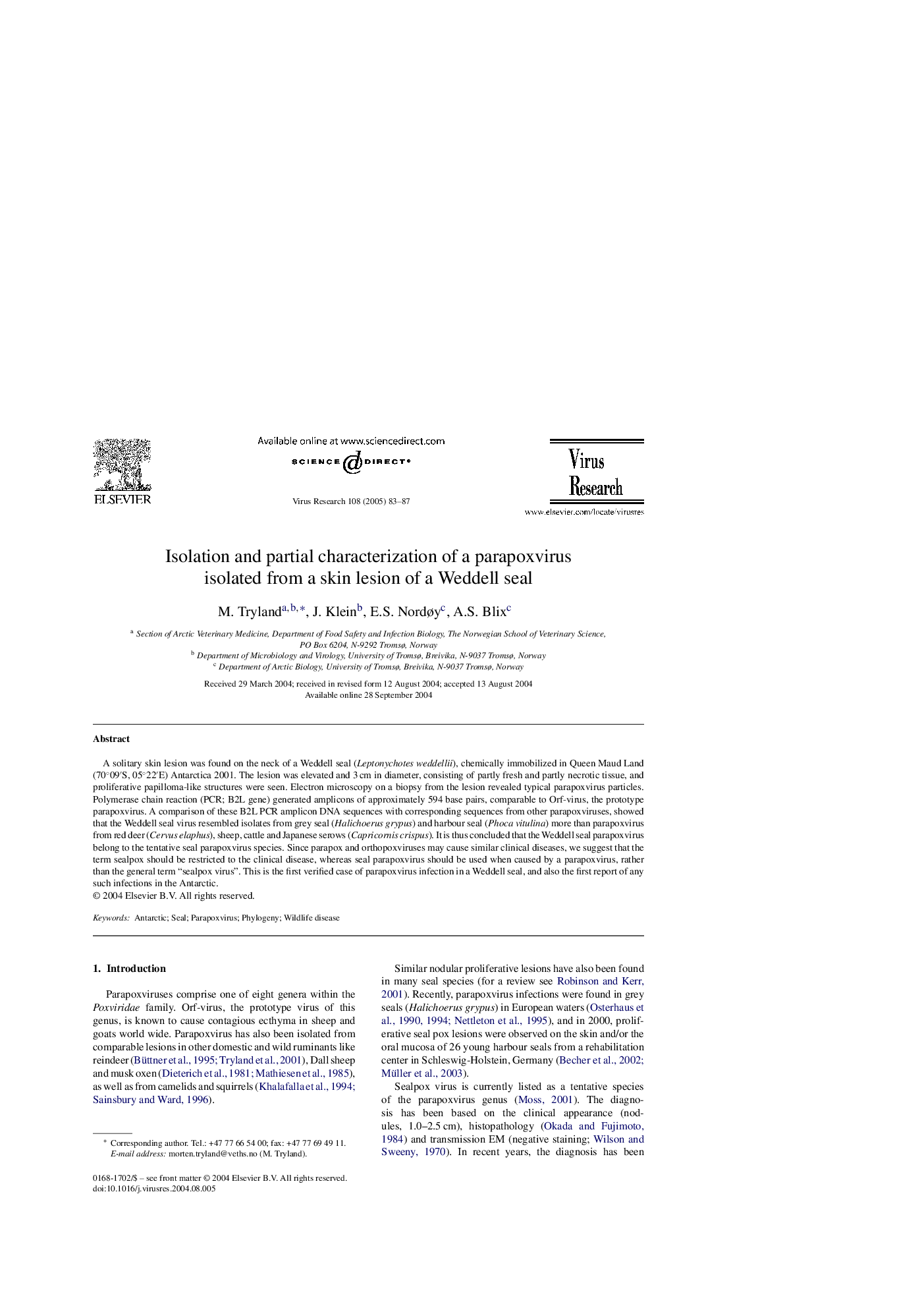| Article ID | Journal | Published Year | Pages | File Type |
|---|---|---|---|---|
| 9289401 | Virus Research | 2005 | 5 Pages |
Abstract
A solitary skin lesion was found on the neck of a Weddell seal (Leptonychotes weddellii), chemically immobilized in Queen Maud Land (70°09â²S, 05°22â²E) Antarctica 2001. The lesion was elevated and 3 cm in diameter, consisting of partly fresh and partly necrotic tissue, and proliferative papilloma-like structures were seen. Electron microscopy on a biopsy from the lesion revealed typical parapoxvirus particles. Polymerase chain reaction (PCR; B2L gene) generated amplicons of approximately 594 base pairs, comparable to Orf-virus, the prototype parapoxvirus. A comparison of these B2L PCR amplicon DNA sequences with corresponding sequences from other parapoxviruses, showed that the Weddell seal virus resembled isolates from grey seal (Halichoerus grypus) and harbour seal (Phoca vitulina) more than parapoxvirus from red deer (Cervus elaphus), sheep, cattle and Japanese serows (Capricornis crispus). It is thus concluded that the Weddell seal parapoxvirus belong to the tentative seal parapoxvirus species. Since parapox and orthopoxviruses may cause similar clinical diseases, we suggest that the term sealpox should be restricted to the clinical disease, whereas seal parapoxvirus should be used when caused by a parapoxvirus, rather than the general term “sealpox virus”. This is the first verified case of parapoxvirus infection in a Weddell seal, and also the first report of any such infections in the Antarctic.
Related Topics
Life Sciences
Immunology and Microbiology
Virology
Authors
M. Tryland, J. Klein, E.S. Nordøy, A.S. Blix,
